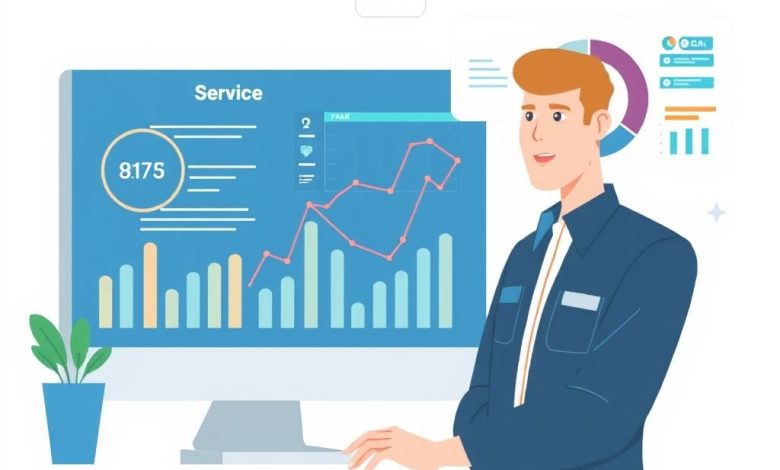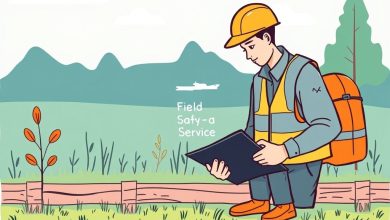Field Service KPIs You Should Track

Field Service KPIs You Should Track
Introduction
In today’s competitive field service industry, tracking Key Performance Indicators (KPIs) is crucial for success. KPIs provide valuable insights into various aspects of your business operations, enabling informed decision-making and continuous improvement. This article will explore the essential field service KPIs that every manager should track to optimize their operations and achieve better results.
Importance of KPIs in Field Service Management
KPIs serve as benchmarks against which businesses can measure their performance over time. They help identify areas of strength and weakness, allowing managers to focus resources effectively. By regularly monitoring and analyzing KPIs, field service companies can:
- Improve operational efficiency
- Enhance customer satisfaction
- Increase revenue
- Reduce costs
- Gain a competitive edge in the market
Revenue-Related KPIs
Revenue-related KPIs focus on financial metrics that directly impact your bottom line.
Average Ticket Value (ATV)
Average Ticket Value measures the average amount of money earned per service call or job. It’s calculated by dividing total revenue by the number of jobs completed.
“`
ATV = Total Revenue / Number of Jobs Completed
“`
Tracking ATV helps identify opportunities to increase earnings without necessarily increasing the number of jobs. For example, upselling services or offering premium support packages could boost ATV.
Customer Retention Rate
Customer retention rate indicates how well your company retains customers over time. It’s calculated by dividing the number of retained customers by the original number of customers, multiplied by 100.
“`
Customer Retention Rate = (Number of Retained Customers / Original Number of Customers) * 100
“`
A high customer retention rate suggests satisfied customers who are likely to return for future services and potentially refer others to your company.
First-Time Fix Rate
First-time fix rate measures the percentage of issues resolved on the first visit. It’s calculated by dividing the number of successful first-time fixes by the total number of service calls.
“`
First-Time Fix Rate = Number of Successful First-Time Fixes / Total Number of Service Calls * 100
“`
Improving this metric can lead to increased customer satisfaction and reduced repeat visits, ultimately boosting overall efficiency and profitability.
Operational Efficiency KPIs
Operational efficiency KPIs focus on internal processes and resource utilization.
Mean Time To Repair (MTTR)
Mean Time To Repair measures the average time taken to resolve an issue from when it’s reported until it’s fixed. It’s calculated by summing all repair times and dividing by the number of repairs.
“`
MTTR = Sum of All Repair Times / Number of Repairs
“`
Reducing MTTR can improve customer satisfaction and reduce costs associated with repeat visits or extended downtime.
Technician Utilization Rate
Technician utilization rate indicates how efficiently technicians are being used. It’s calculated by dividing the total billable hours worked by the total available work hours.
“`
Technician Utilization Rate = Total Billable Hours Worked / Total Available Work Hours
“`
Optimizing this metric can help ensure that technicians are fully utilized while maintaining a healthy work-life balance.
Vehicle Utilization Rate
Vehicle utilization rate measures how effectively vehicles are being used. It’s calculated by dividing the total miles driven on billable jobs by the total miles driven by all vehicles.
“`
Vehicle Utilization Rate = Total Miles Driven on Billable Jobs / Total Miles Driven by All Vehicles
“`
Improving vehicle utilization can reduce fuel costs and extend the life of your fleet.
Quality and Reliability KPIs
Quality and reliability KPIs focus on the consistency and effectiveness of service delivery.
Customer Satisfaction Score (CSAT)
Customer Satisfaction Score measures how satisfied customers are with the service received. It’s typically measured through surveys or feedback forms.
While CSAT isn’t a numerical value like other KPIs, it provides invaluable qualitative data that can guide improvements in service quality.
Net Promoter Score (NPS)
Net Promoter Score measures customer loyalty and predicts business growth. It’s calculated by subtracting the percentage of detractors from the percentage of promoters.
“`
NPS = Percentage of Promoters – Percentage of Detractors
“`
A positive NPS indicates strong customer loyalty, which can lead to increased referrals and repeat business.
On-Time Arrival Rate
On-Time Arrival Rate measures the percentage of service calls where technicians arrive within the promised timeframe.
“`
On-Time Arrival Rate = Number of On-Time Arrivals / Total Number of Scheduled Appointments * 100
“`
Maintaining a high on-time arrival rate contributes to improved customer satisfaction and trust in your service.
Conclusion
Implementing and consistently tracking these field service KPIs can significantly enhance your business operations. Remember that each KPI should be tailored to your specific business needs and goals. Regularly review and adjust your KPIs as your business evolves.
By focusing on these key performance indicators, field service managers can make data-driven decisions, streamline operations, and deliver exceptional customer experiences. As technology continues to advance, consider leveraging specialized field service management software to automate KPI tracking and analysis, freeing up more time for strategic decision-making and growth initiatives.




